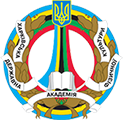- Головна сторінка
- →
- Періодичні видання
- →
- Слобожанський науково-спортивний вісник
- →
- Перегляд матеріалів
JavaScript is disabled for your browser. Some features of this site may not work without it.
The comparison of students’ long jump study programs
Yefremenko, Andrii; Рiatysotska, Svitlana; Pavlenko, Viktor
Дата:
2023-09-30
Короткий опис(реферат):
Background and Study Aim: The modern educational process in physical education needs to form educational competencies for a limited time. It is necessary to use modern approaches. Purpose – to determine the effectiveness of holistic and differentiated methods of study the technique of long jumps by combat sports students.
Material and methods: Objects. 20 healthy first-year students of bachelor of different sports qualification, who are engaged in single combats (n = 20). Following the results of the stating experiment, the participants were divided into two groups: group A (n = 10) – students with a satisfactory level of physical fitness; group B (n = 10) – students with a high level of physical fitness. Methods: testing of physical fitness using specific field tests for long jumpers for to determine the physical fitness of combat sports students and their ranking by test groups (30 m running (s); standing long jump (cm) 5-fold jump on the take-off leg (cm); triple standing jump (cm); long Jump (cm)); record video and video analysis of the elements technique of the long jump (long jump (cm); speed of the last 5 m of running start (m/s); speed of the last 10 m running start (m/s); take-off time (m/s); tempo of the last six steps (step/s)) – in order to determine the technique of the long jump from a run; the statistics made it possible to determine the effectiveness of programs of study the technique of the long jump by comparing the indicators of the initial and repeated video analysis of the records. Approach. The impact of two study programs on long jumps with a running start of students was investigated. They learn to become coaches and are engaged in types of single combats. Programs are developed considering two approaches: 1) holistic execution of different jumps (holistic approach); 2) performing special exercises and long jump parts (differentiated approach). To form study programs, the main exercises for studying long jump techniques were chosen.
Results: At the beginning of the study, the indicators of physical fitness were stated. The objects were ranked into two different groups A (satisfactory level of physical fitness) and B (high level of physical fitness) (p<0.05): 30 m running – [4,53 s (Group A); 4,39 s (Group B)]; standing long jump – [235,63 cm (Group A); 273,38 cm (Group B)]; 5-fold jump on the take-off leg – [1223.50 cm (Group A); 1270.88 cm (Group B)]; triple standing jump – [635,88 cm (Group A); 667,38 cm (Group B)]; long jump – [451,75 cm (Group A); 472,63 cm (Group B)]. After used approach, it was found that as a result of study the long jump technique using different programs, the test results significantly improved (p<0.05): long jumps – for the athletes of Group A [451,75 cm; 478,50 cm], for the athletes of Group B [472,63 ; 491,88 cm]; speed of the last 5 m of running start – for the athletes of Group A [6,41; 6,47 m/s], for the athletes of Group B [6,79 ; 6,87 m/s]; speed of the last 10 m running start – for the athletes of Group A [6,42; 6,48 m/s]; take-off time – for athletes of Group A [0,23 ; 0,21 m/s], for the athletes of Group B [0,22; 0,20 m/s]; tempo of the last six steps – for the athletes of Group A [3,01 ; 3,13 steps/s], for the athletes of Group B [3,24 ; 3,41 steps/s]. The positive impact of the developed programs on speed indicators of running start and take-off in both test groups was found. All indicators as a result of intra-group and inter-group comparison significantly differed from the beginning to the end of the research (p<0,05). The exception was indicators of take-offs, which didn’t differ significantly in groups A and B (p>0,05).
Conclusion: The effectiveness of the influence of both developed training programs on the long jump technique was discovered. Despite the previous motor experience and nonspecialized sports activity, it is possible to introduce different ways of studying motor actions, which are provided by the educational program. This allows you to maximize the individual opportunities of students. The presented long jump approaches allow using the level of physical fitness of trained individuals as a basis for the formation of educational programs. This allows you to increase the motivation, curiosity, and effectiveness of training a modern specialist in physical education. The development of flexible programs for students to study in other types of track and field is necessary.
Долучені файли
Даний матеріал зустрічається у наступних розділах
-
Слобожанський науково-спортивний вісник
Журнал містить статті, що відображають матеріали сучасних наукових досліджень у галузі фізичної культури та спорту
Пошук
Перегляд
-
Всі матеріали
-
Колекція

